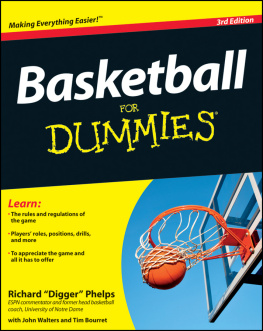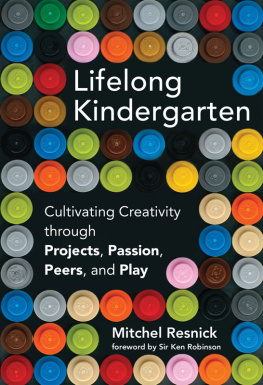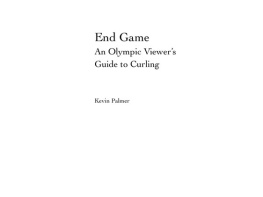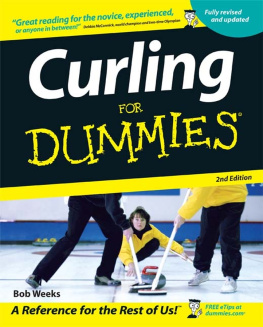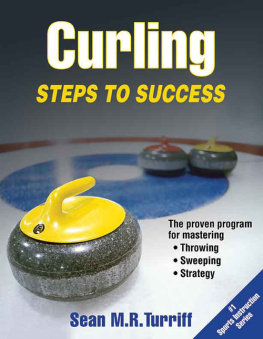CURLING
JAMES S. MITCHEL
Complete Rules and Regulations,
with Diagrams of Play
Revised for 1899
Published by Left of Brain Books

Copyright 2021 Left of Brain Books
ISBN 978-1-396-31821-4
eBook Edition
All rights reserved. No part of this publication may be reproduced, distributed, or transmitted in any form or by any means, including photocopying, recording, or other electronic or mechanical methods, without the prior written permission of the publisher, except in the case of brief quotations embodied in critical reviews and certain other noncommercial uses permitted by copyright law. Left of Brain Books is a division of Left of Brain Onboarding Pty Ltd.
Table of Contents
Curling.
Noo, fill a bumper to the brim,
And drink wi three times three, man;
May curlers on lifes slippery rink
Trae crul rubs be free, man.
The game of curling is one of the most interesting of our winter amusements. While the majority are inclined to look on the features of the sport in a jocose light, yet we think that it affords scope for a display of skill, such as few games demand; in fact, it has been claimed that no mortal can curl to perfection, but tradition has it that a certain Tam Pate, who flourished in the early part of this century, never missed a shot.
Of the origin of curling it is hard to speak with accuracy, for in every European country where civilization has entered, their annals speak of it in some shape or other. It drifted about from clime to clime until it finally found home in the bosom of Scotland.
But by far the most important event in the history of curling was the formation of the Grand Caledonian Club in 1838. In 1843 the word Royal was added by orders of Her Majesty on a visit to Scotland, and since the club has numbered amongst its presidents His R. H., the Prince of Wales, as well as other members of the Royal Family, the game now is so thoroughly Scotch that it cannot adapt itself to the language and manners of any other country. Wherever a curling pond is to be found, a Scotchman is to be found at the bottom of it, and the game will not be universal until Scotch is the one tongue, and the human race one Scotch familyan event, however desirable to some, is not a probable occurrence.
In 1878 the Rusholme Ice Rink, at Manchester, was constructed at a cost of 20,000. The Southport Glaciarium followed in 1879 at a cost of 30,0000. The cause of these expensive rinks was want of natural ice, owing to the mildness of the climate.
Curling was introduced into Ireland by the Scotch adventurers, who were sent across as planters to root in the soil and undermine the native buds. However, all traces of the sport had disappeared when Dr. Carnie formed the Belfast Club in 1839.
The game has gone forth and fared better. In Canada, where ice and Scotch settlers prevail, curling is a favorite sport. There are now nineteen clubs in the Quebec province, all affiliated to the Royal Club.
In 1874 curling had made such progress in Western Canada that the Ontario province was formed separate, with its headquarters at Toronto.
Curlers in the United Stated have also since 1867 been organized under a grand national club with its headquarters in New York.
A footing has also been obtained by the roaming game in New Zealand, Newfoundland, Nova Scotia, Russia, Norway and in Switzerland.
The following table shows the distribution of clubs and curlers:
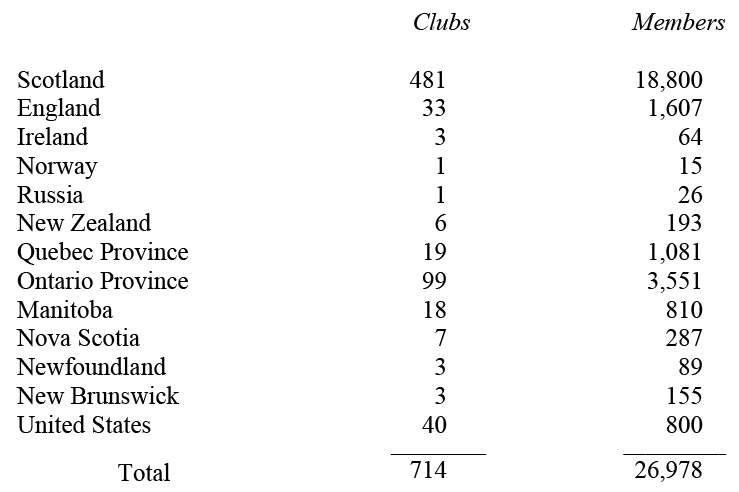
The most important article in the curlers outfit is the curling stone. In selecting a pair of stones the curler should not omit to take the beauty of the article into account, although it must not, of course, be preferred to real worth. Let him remember that the stone must be his servant, not his master, and select one over which he has command. It is also good to bear in mind that the best assistant in the management of the stone is polish. The careful curler will never allow his curling stone to loose its gloss or brilliancy. With this the heaviest stone is easily managed; without it the lightest stone is dull, stubborn and unmanageable. What the curler requires is a true stonei.e. a stone which will not be dull when the ice is dull and keen when the ice is keen, but which will be equable in mood and not affected by change of weather. Those on sale by A. G. Spalding & Bros., Broadway, New York, are far superior to any I have seen imported or otherwise.

diagram of curling rink.
It will thus be seen that the rink game is in the hands of a skip or director. The essential qualities of this worthy is, that he should have a thorough knowledge of the game. He must be a man of humor, delighting in jokes and jollities. With a couple of sour skips at the end of the rink all the life goes out of the game. A skip should be a man of imperturbable temper, never put out when a mishap occurs, never blaming anybody, never angry at his men, never blaming anybody but himself, in the hour of defeat unmurmuring, and in the hour of triumph generous. He must be just, honest, wise, cool, prudent, watchful, brave, courageous and blameless as a bishop. By the tee, watching and directing, he should stand. He should know what each of his team has to perform, as each has his place to fill. It is four against four battling round the tee seeing who first will take it, and who last will hold it. The first player, with a pair of heavy stones, must draw up toward the coveted spot. The second must protect the lead if the enemy has not dislodged him. The third, most likely, have an angular wick or cannon-shot to play.
The next important feature of the sport, is the position. In rule 1, distinct instruction is given as to the place of the crampit on which the player is to take his stand. He must fit the tee, i.e., he must so place himself that his eye travels along the central line toward the farther tee, while his right foot rests in the hack or on the heel of the crampit. No matter what kind of a shot he may be asked to play, even though the point aimed at maybe several feet to the right or to the left of the distant tee, the crampit or hack is immovable, and no advantage must be taken by changing to a place from which the shot could be more easily taken. A player need never trouble himself about the awkwardness of his position if he find that he has command of his stone, and can always do the needful when his skip gives the word of command.
The swing now requires attention. Hutchinson says that the curling stone should describe the same figure in its upward journey as you hope to make it describe in its descent. As the stone descends, the centre of gravity is advanced, and the left foot must also be lifted and advanced as a base-line to preserve the stability of the body. This saves one from rushing forward along the ice. The lifting of the left foot gives freedom in swinging the body and arm to the right or left, as the mark to be aimed at may require, for such movement is necessary and does not interfere with the first duty of fitting the tee. One of the worst faults in curling is a clumsy, awkward delivery of the stone. By this the ice alongside the crampit is cracked and broken up, and the curler gives much annoyance to the other players, besides he does himself injury. When a stone is quietly and gracefully delivered, it is far more effective than a stone played with double energy, the force of which is half spent by the blow it receives as it meets the ice.
Next page

